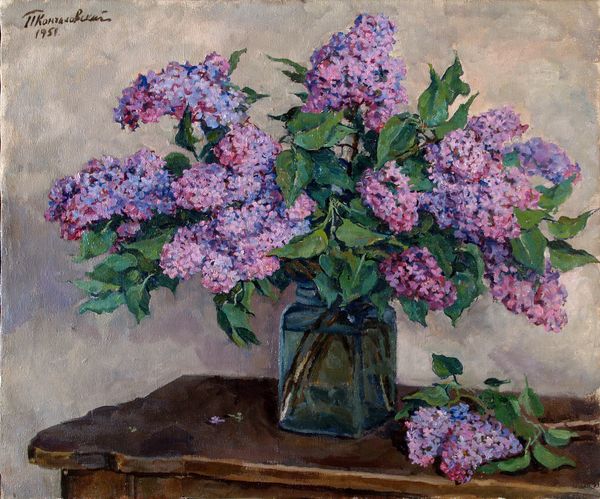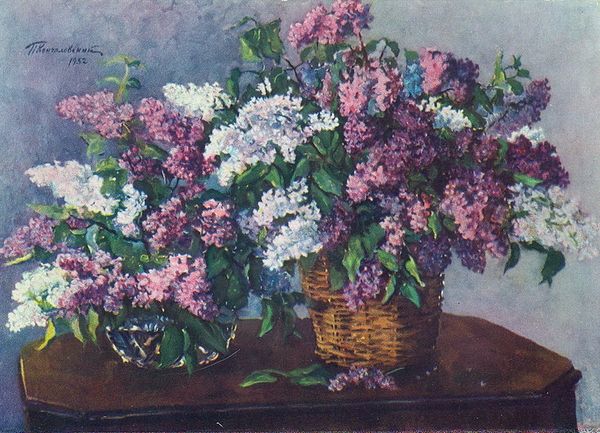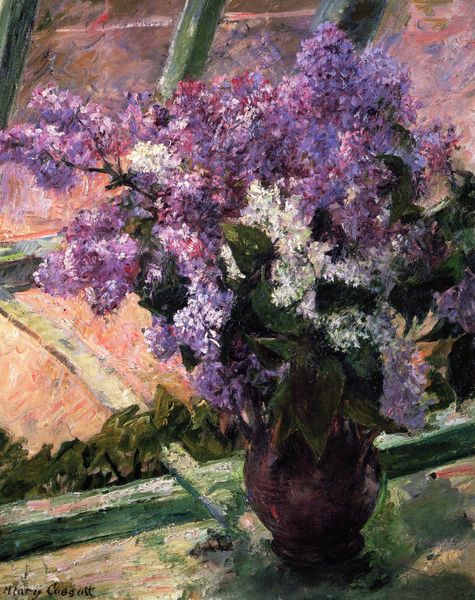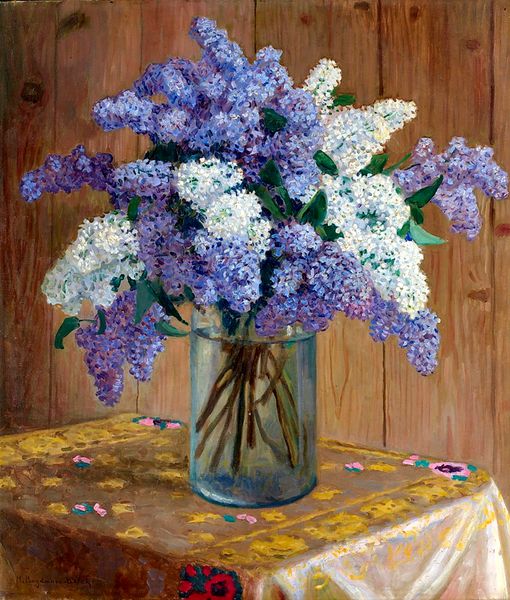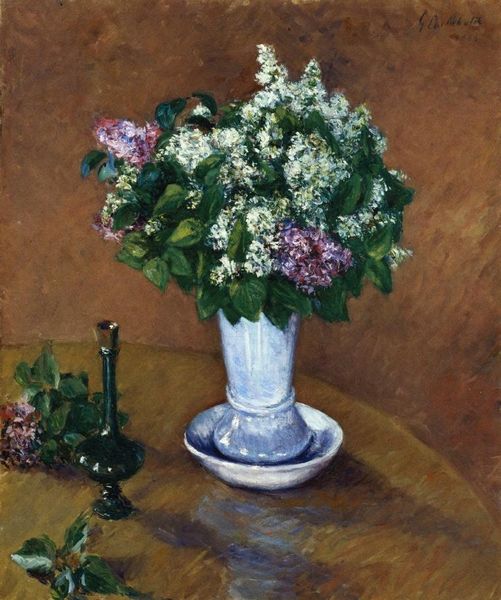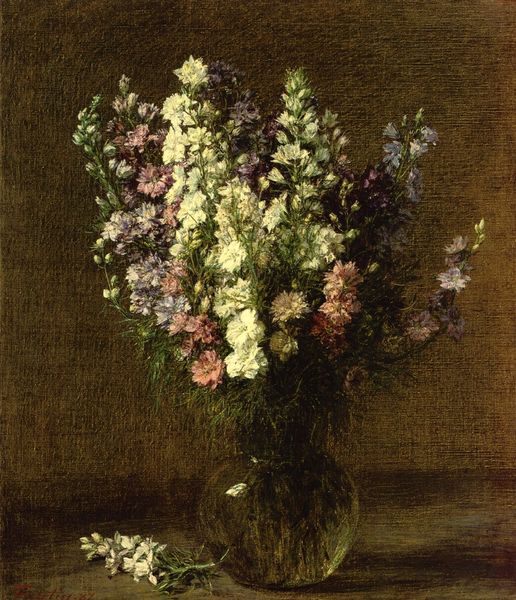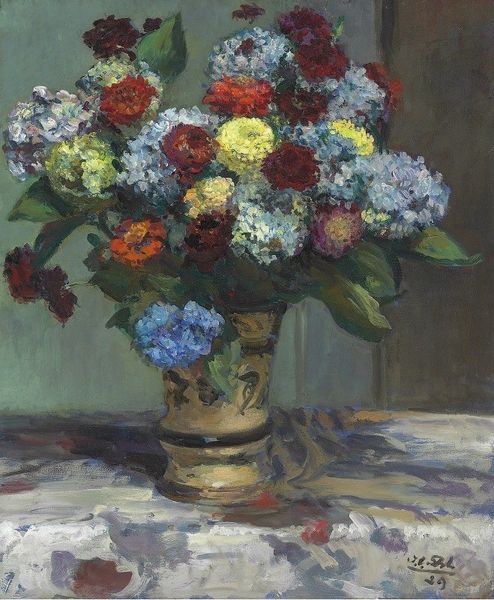
painting, oil-paint
#
painting
#
oil-paint
#
oil painting
#
post-impressionism
Copyright: Pyotr Konchalovsky,Fair Use
Curator: Looking at "Lilacs," an oil painting, the immediate sense I get is one of subdued, almost somber joy. The colors, while floral, are deeply saturated against a dark background. Editor: The darkness around the central subject matter really emphasizes the beauty of the lilac blossoms. The thick application of paint speaks to Post-Impressionist ideas, but I find the presentation rather classic. Lilacs were extremely fashionable in paintings, illustrations and literature throughout the late 19th century among the upper classes. Did this contribute to the artwork's market value? Curator: Perhaps, though without a known date, it's hard to say specifically what sociocultural context shaped Konchalovsky's work here. Regardless of such a factor, I want to notice the clear structuring of color. See how pink, purple, blue and white cluster almost like chords, playing against each other formally? It allows each tone to assert itself uniquely. Editor: Yes, the colour is magnificent, and it brings into sharper focus the traditional values associated with lilacs - renewal, confidence, the fleeting nature of youthful joy. When were lilacs imported to Russia? Would it have been a popular flower among all social classes? Did the flowers' scent play any kind of cultural role? Curator: Fascinating questions! I would say that focusing strictly on the paint application, the staccato rhythm of the brushstrokes themselves communicates as much about this sense of ephemerality as any overt symbolism. Each dab a miniature representation of transient beauty. I also see an expression of tension arising from the juxtaposition between this density of color and that shadowy ground; the artwork could express more serious reflections. Editor: Maybe we will see if the museum researchers can give us any useful context about its place among traditional and social interpretations of Russian painting, and any relation to its status as an expression of elite ideals. I still believe it gives it extra historical significance. Curator: Agreed. Analyzing how these artistic traditions interact allows us a deeper, more comprehensive appreciation. Editor: Precisely! Both historical circumstance and the compositional elements come together to enhance the viewing experience.
Comments
No comments
Be the first to comment and join the conversation on the ultimate creative platform.
